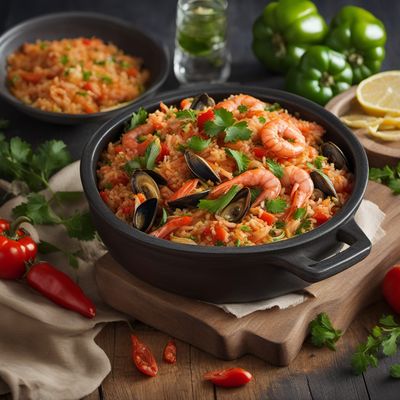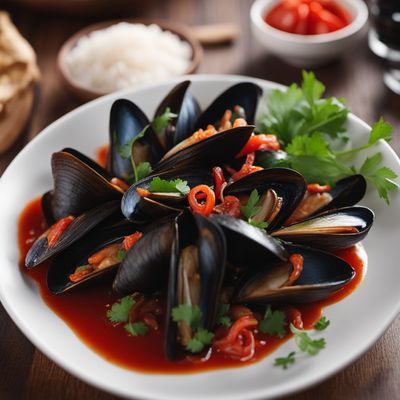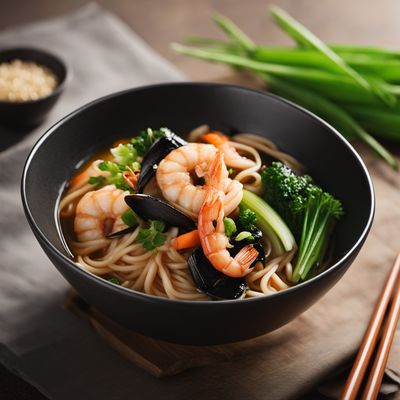
Ingredient
Canned seafood
Ocean's Bounty in a Can
Canned seafood refers to various types of seafood that have been preserved in cans, such as tuna, salmon, sardines, and anchovies. These products are typically cooked and packed in oil, water, or sauces, ensuring their long shelf life. Canned seafood provides a rich source of protein, omega-3 fatty acids, and essential vitamins and minerals. The taste and texture of canned seafood can vary depending on the specific type, but they generally offer a savory, briny flavor with a tender or flaky texture. The appearance of canned seafood can range from pink or white chunks of fish to whole small fish packed tightly in a can.
Origins and history
Canned seafood has a long history dating back to the early 19th century when it was first introduced as a method of preserving fish for long sea voyages. This innovation allowed sailors and explorers to have a reliable source of sustenance during their journeys. Over time, the canning process improved, and canned seafood became more widely available to the general public. Today, canned seafood is enjoyed worldwide and is a staple in many cuisines, particularly in coastal regions. It is also a popular choice for emergency food supplies and camping trips.
Nutritional information
Canned seafood is a rich source of protein, omega-3 fatty acids, vitamins (such as vitamin D and B12), and minerals (such as calcium and iron). It is also low in saturated fat and carbohydrates. The nutritional content may vary depending on the specific type of seafood and the preservation method used.
Allergens
Some canned seafood products may contain allergens such as fish and shellfish. It is important to read the labels carefully to identify any potential allergens before consuming.
How to select
When selecting canned seafood, look for cans that are free from dents, bulges, or leaks, as these can indicate compromised quality or spoilage. Check the expiration date to ensure freshness. Opt for brands that source their seafood sustainably and follow responsible fishing practices.
Storage recommendations
To maintain the freshness and quality of canned seafood, store the unopened cans in a cool, dry place away from direct sunlight. Once opened, transfer any unused portion to a separate container, cover tightly, and refrigerate. Consume within a few days to ensure optimal taste and texture.
How to produce
Canned seafood is typically produced by commercial fishing operations that catch the seafood, process it, and pack it in cans with oil, water, or sauces. Amateur fishermen can also preserve their catch by canning it at home using proper canning techniques and equipment.
Preparation tips
Canned seafood can be enjoyed straight from the can as a quick and easy snack or added to various dishes. Tuna can be used in salads, sandwiches, or pasta dishes. Sardines can be mashed and spread on toast or used in Mediterranean-style recipes. Salmon can be incorporated into patties, sushi rolls, or pasta sauces. Anchovies can be used to enhance the flavors of sauces, dressings, or pizzas. The possibilities are endless!
Culinary uses
Canned seafood is widely used in various cuisines around the world. It is commonly found in Mediterranean dishes like pasta puttanesca, Spanish tapas like boquerones, and Japanese sushi rolls like tekka maki. It is also a popular ingredient in salads, sandwiches, and seafood chowders.
Availability
Canned seafood is available in most grocery stores, supermarkets, and specialty food stores worldwide. It is also commonly found in coastal regions and areas with a strong fishing industry.
More ingredients from this category
Recipes using Canned seafood » Browse all

Sammarinese Seafood Laksa
Mediterranean Delight: Sammarinese Seafood Laksa

Mid-Atlantic Style Soba Noodles with Seafood
Chesapeake Bay Seafood Soba Delight

Maritime Chakalaka
Spicy Maritime Vegetable Stew

Portuguese Seafood Rice
Oceanic Delight: Portuguese Seafood Rice

Mamallena with a Liaoning Twist
Savory Seafood Delight: Liaoning-style Mamallena

Schleswig-Holstein Fideus a la Cassola
North Sea Delight: Schleswig-Holstein Fideus a la Cassola

Louisiana Creole Shrimp Étouffée
Savory Cajun Delight: Louisiana Creole Shrimp Étouffée

Canadian-style Seafood Udon
Oceanic Delight: Canadian Seafood Udon

Soulful Gumbo
Savor the Soul: A Hearty Gumbo Recipe

Molecular Gumbo
The Gastronomic Revolution: Molecular Gumbo

Taiwanese-style Gumbo
Taiwanese Spiced Seafood Stew

Singaporean Crab Bee Hoon Soup
Indulgent Crab Delight: Singaporean Bee Hoon Soup
